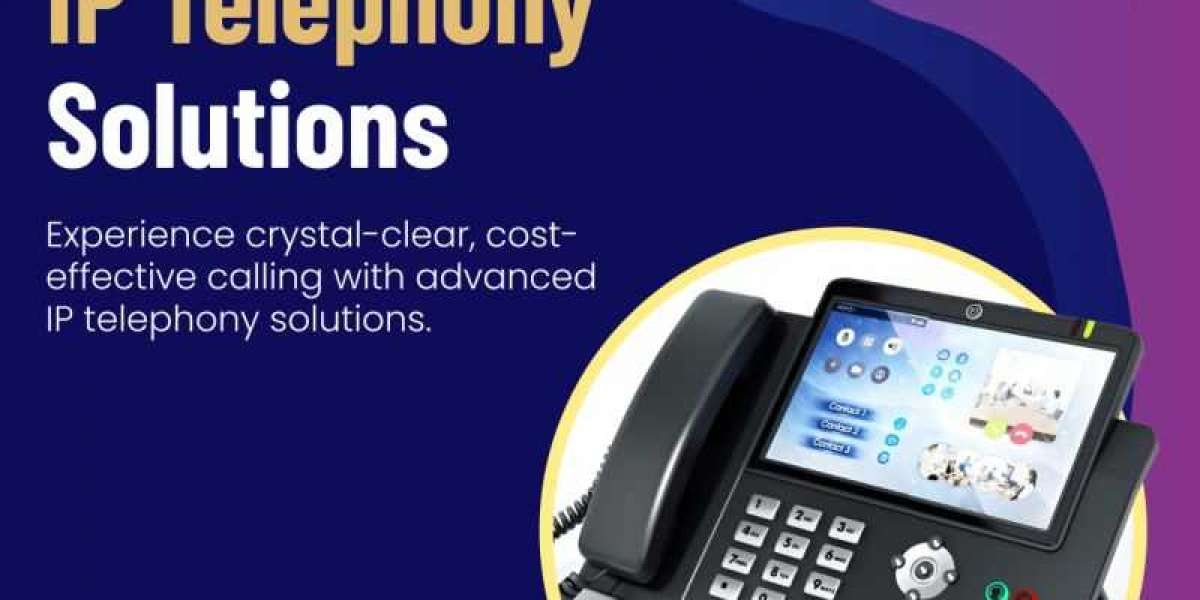In the evolving digital era, IP Telephony Solutions have emerged as a cornerstone of modern business communication. Replacing traditional landlines with internet-based systems, these solutions enable voice, video, and messaging services over IP networks. By leveraging the internet rather than conventional telephone infrastructure, businesses gain flexibility, scalability, and significant cost savings.
What Are IP Telephony Solutions?
IP Telephony Solutions, also known as Voice over IP (VoIP), use the internet to transmit voice and multimedia content. Instead of relying on traditional analog telephone lines, voice signals are converted into digital packets and transmitted via broadband connections. These solutions are typically delivered through specialized software, hardware-based IP phones, or mobile applications.
A complete IP telephony system often includes features such as call forwarding, voicemail, conference calling, automated attendants, and video conferencing. These tools help businesses streamline communication and improve internal and external collaboration.
Key Components of IP Telephony
- VoIP Gateway: Converts analog voice signals into digital data and vice versa, acting as a bridge between traditional phone systems and IP networks.
- IP Phones: These phones connect directly to the internet and come with built-in VoIP capabilities.
- Private Branch Exchange (PBX): A virtual or hosted PBX manages call routing, voicemail, and other telephony features within the organization. Voice and video calls are examples of multimedia sessions that can be started, managed, and ended using the Session Initiation Protocol (SIP).
Benefits of IP Telephony Solutions
Implementing IP telephony provides a variety of advantages for businesses, both large and small:
Economical Communication: Conventional phone lines can be costly, particularly when making international calls. IP telephony drastically lowers operating and long-distance expenses.
Enhanced Mobility: Employees can make and receive calls from any location with internet access using softphones or mobile apps, supporting remote work and global teams.
Scalability: Without requiring complicated infrastructure modifications or new physical connections, businesses may quickly add or remove users.
Advanced Features: Features like call recording, IVR (Interactive Voice Response), and video conferencing enhance productivity and improve customer service.
Integration with Business Systems: IP telephony can integrate with CRM software and other tools, enabling better data management and customer interaction.
Use Cases in Modern Businesses
IP Telephony Solutions are widely adopted across different industries due to their versatility:
Customer Support Centers: Call routing, auto-attendants, and call analytics make customer support more efficient and responsive.
Remote Workforces: Employees working from home or on the go can stay connected through internet-enabled phones and communication platforms.
Startups and SMEs: These businesses benefit from the low setup costs and easy scalability of IP telephony systems.
Global Enterprises: IP telephony supports multi-location businesses by providing unified communication platforms across different offices worldwide.
On-Premise vs. Cloud-Based IP Telephony
Businesses can choose between on-premise and cloud-hosted IP telephony systems:
On-Premise Systems: Require physical servers and hardware installed at the organization’s location. Although these systems give you more control, they come with higher initial expenses and upkeep requirements.
Cloud-Based Systems: Hosted by third-party providers, these systems are accessible over the internet and require minimal internal infrastructure. They simplify management, provide flexibility, and update automatically. Most modern businesses prefer cloud-based IP telephony due to its ease of use, cost-effectiveness, and ability to support remote operations.
Security Considerations
As with any internet-based service, security is a critical aspect of IP telephony. Businesses should ensure that their systems are protected from potential threats such as call interception, fraud, and denial-of-service attacks. Best practices include:
Using encrypted voice transmission protocols
Implementing firewalls and intrusion prevention systems
Regular software updates and security patches
Secure user authentication and access control
The Future of IP Telephony Solutions
IP telephony solutions keep changing as technology does. Integration with artificial intelligence, such as voice recognition and smart call routing, is becoming more common. Unified Communication as a Service (UCaaS) platforms are incorporating IP telephony as part of a broader suite that includes messaging, video conferencing, and collaboration tools.
With 5G networks and enhanced broadband infrastructure, the quality and reliability of IP telephony are expected to improve further, making it a foundational technology for digital-first businesses.
Conclusion
IP Telephony Solutions have revolutionized how businesses communicate, offering flexibility, cost savings, and advanced features that go beyond traditional phone systems. Whether for internal collaboration or customer engagement, adopting IP-based communication tools is a strategic move that aligns with the modern business environment. As organizations continue to embrace digital transformation, IP telephony will remain a key enabler of efficient and agile communication.




